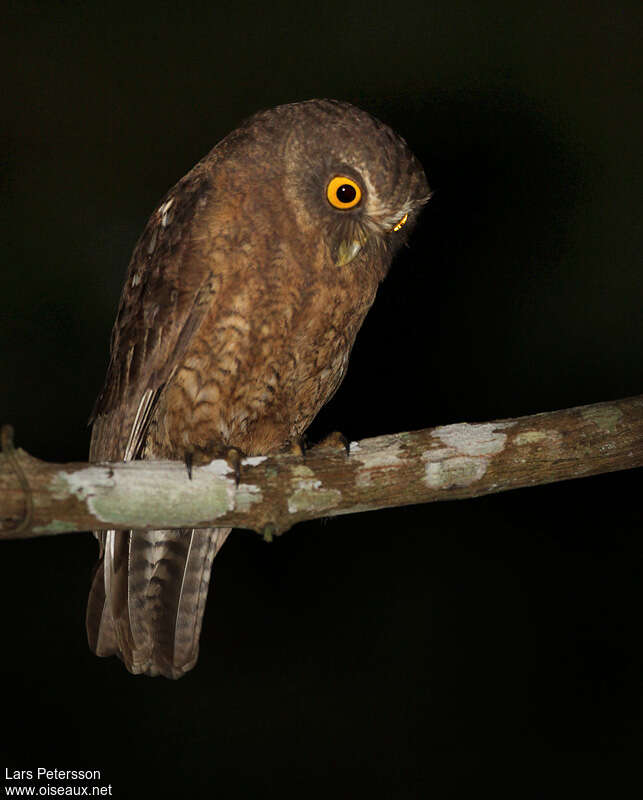Ninox Everetti: The Siasi Island Hawk Owl
Share
The Ninox everetti, commonly known as the Siasi Island Hawk Owl, is a fascinating bird species belonging to the order Strigiformes and the family Strigidae. This unique owl is endemic to the Philippine Islands, specifically found on Siasi Island in the Sulu Archipelago. With its striking appearance and intriguing behaviors, the Siasi Island Hawk Owl is a subject of interest for ornithologists and birdwatchers alike.

Taxonomy
The Siasi Island Hawk Owl is classified under the following taxonomic hierarchy:
- Order: Strigiformes
- Family: Strigidae
- Subfamily: Buboninae
- Species: Ninox spilocephala
- Subspecies: everetti
- Type: Ninox everetti Sharpe, Bull. Brit. Orn. CI., 6, 1897, p. 47. (Siasi Island, Sulu Archipelago)
This classification highlights the bird's close relationship with other owls in the Strigidae family, known for their nocturnal habits and distinctive calls.
Physical Characteristics
The Siasi Island Hawk Owl is characterized by its medium size, with a robust body and a rounded head. Its plumage is predominantly brown with intricate patterns of spots and streaks, providing excellent camouflage against the forest backdrop. The eyes are large and yellow, adapted for low-light conditions, which is typical for nocturnal birds.

Habitat
This owl species inhabits the dense forests of Siasi Island, where it prefers areas with ample tree cover. The lush vegetation provides both shelter and hunting grounds, allowing the owl to thrive in its natural environment. The Sulu Archipelago's tropical climate, characterized by high humidity and warm temperatures, further supports the diverse ecosystem that the Siasi Island Hawk Owl calls home.

Diet
The Siasi Island Hawk Owl primarily feeds on small mammals, birds, and insects. Its hunting strategy involves perching quietly on branches and scanning the ground for movement. Once prey is spotted, the owl swoops down with remarkable speed and precision. This diet plays a crucial role in controlling the populations of its prey species, contributing to the ecological balance of its habitat.

Behavior
Ninox everetti is predominantly nocturnal, exhibiting peak activity during the night. Its calls are a series of hoots that can be heard echoing through the forests, serving both as a means of communication and territory establishment. During the day, the owl roosts in the dense foliage, remaining hidden from potential predators and human disturbances.
Reproduction
The breeding season for the Siasi Island Hawk Owl typically occurs during the dry months, when food is more abundant. The female lays a clutch of 2-4 eggs in a tree cavity, where both parents take turns incubating the eggs. After hatching, the chicks are altricial, meaning they are born helpless and rely on their parents for food and protection until they fledge.
Conservation Status
The Siasi Island Hawk Owl is currently classified as vulnerable due to habitat loss and degradation caused by deforestation and human encroachment. Conservation efforts are essential to protect this unique species and its habitat. Initiatives aimed at preserving the forests of Siasi Island and promoting sustainable land use practices are crucial for the survival of Ninox everetti.
Birdwatching Tips
For birdwatchers interested in observing the Siasi Island Hawk Owl, the best time to spot this elusive bird is during the early evening or late at night. Listening for its distinctive calls can also lead to successful sightings. Visiting Siasi Island during the dry season increases the chances of encountering this remarkable owl in its natural habitat.
The Siasi Island Hawk Owl is not just a beautiful bird; it plays a vital role in its ecosystem. By understanding and protecting this species, we contribute to the preservation of the rich biodiversity found in the Philippine Islands. The Siasi Island Hawk Owl serves as a reminder of the delicate balance of nature and the importance of conservation efforts in safeguarding our planet's wildlife.
